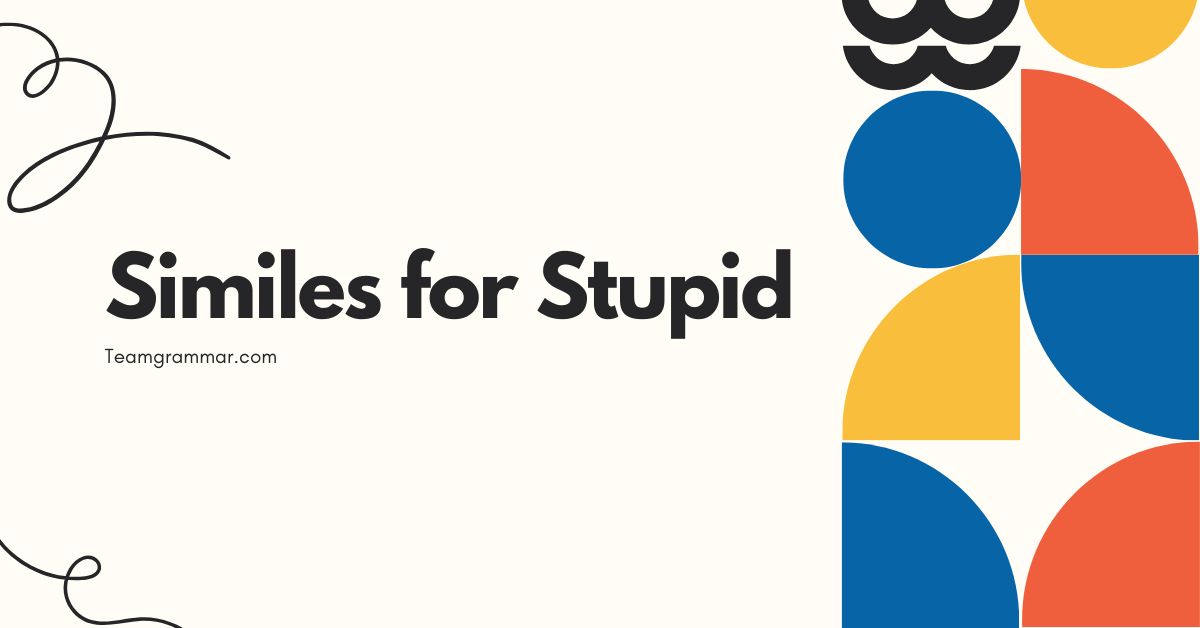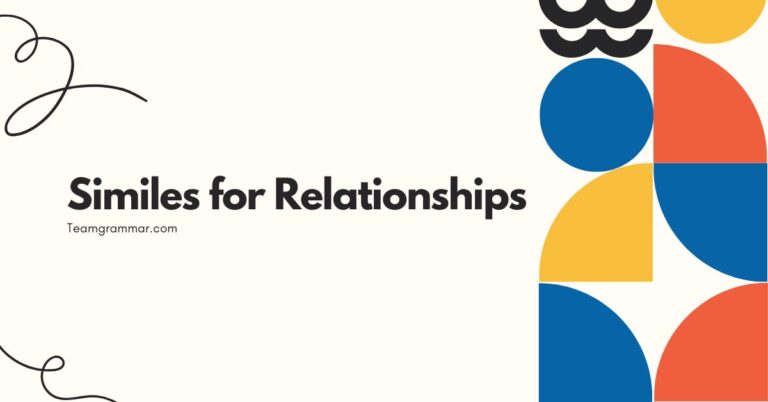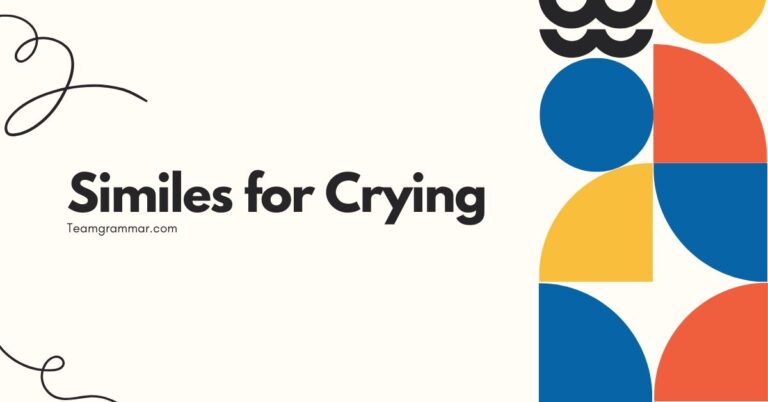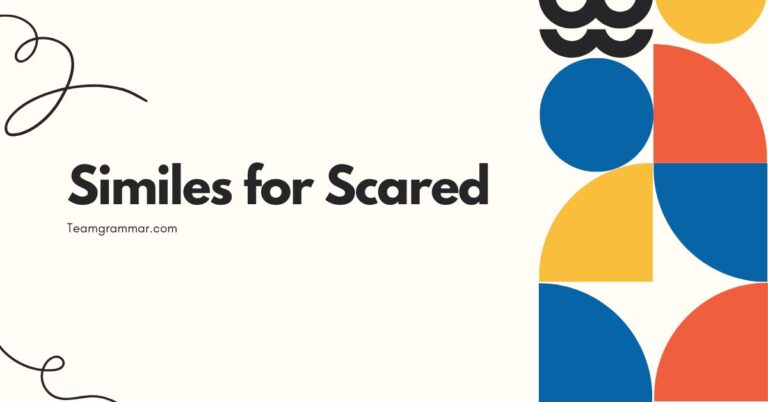33 Similes for Stupid: Understanding Figurative Language
Figurative language enriches our communication, adding color and depth to our expressions. Similes, in particular, provide a vivid way to describe something by comparing it to something else, often using “like” or “as.” While using similes to describe intelligence (or lack thereof) can be sensitive, understanding how these comparisons work grammatically and stylistically is valuable.
This article explores the structure, usage, and nuances of similes related to the concept of “stupid,” providing a comprehensive guide for English language learners and anyone interested in mastering figurative language. By understanding these constructions, one can appreciate the power and potential pitfalls of using similes in various contexts.
Table of Contents
- Introduction
- Definition of Simile
- Structural Breakdown of Similes
- Types of Similes
- Examples of Similes for “Stupid”
- Usage Rules for Similes
- Common Mistakes with Similes
- Practice Exercises
- Advanced Topics in Similes
- Frequently Asked Questions
- Conclusion
Definition of Simile
A simile is a figure of speech that compares two unlike things, using the words “like” or “as.” The primary function of a simile is to create a vivid image in the reader’s or listener’s mind by drawing a parallel between two distinct concepts. Similes are a powerful tool in literature, poetry, and everyday conversation, adding depth and color to language.
They are used to emphasize a particular quality or characteristic of the subject being described.
In the context of describing intelligence (or a lack thereof), similes can be used to create humorous, critical, or satirical effects. However, it’s important to be mindful of the potential for causing offense when using similes that imply stupidity.
The effectiveness of a simile depends on the clarity of the comparison and the audience’s understanding of the reference point. A well-crafted simile can make a statement more memorable and impactful.
Structural Breakdown of Similes
The basic structure of a simile consists of three key elements: the subject (the thing being described), the comparison word (“like” or “as”), and the object of comparison (the thing the subject is being compared to). Understanding this structure is crucial for creating effective and grammatically correct similes.
Let’s break down each component:
- Subject: This is the person, place, thing, or idea that is being described. For example, in the simile “He is as dense as a brick,” the subject is “He.”
- Comparison Word: This is the word that indicates a comparison is being made, typically “like” or “as.” The choice between “like” and “as” can sometimes depend on the grammatical context.
- Object of Comparison: This is the thing to which the subject is being compared. In the example “He is as dense as a brick,” the object of comparison is “a brick.” The object of comparison should share a relevant characteristic with the subject.
The comparison word (“like” or “as”) acts as a bridge, connecting the subject and the object of comparison and highlighting their shared characteristic. The effectiveness of the simile depends on how well the object of comparison conveys the intended meaning.
A strong simile creates a clear and memorable image in the mind of the reader or listener.
Types of Similes
Similes can be categorized based on the nature of the comparison they make and the effect they create. Understanding these categories can help you choose the most appropriate simile for a given situation.
Direct Similes
Direct similes explicitly state the comparison using “like” or “as.” They are the most common and straightforward type of simile.
Indirect Similes
Indirect similes imply the comparison without explicitly stating it, often through a more nuanced or subtle use of language. These are less common but can be more impactful.
Humorous Similes
Humorous similes use comparisons that are intentionally funny or absurd, often to create a lighthearted or satirical effect. When used to describe stupidity, these can be risky and should be used with caution.
Critical Similes
Critical similes are used to express disapproval or criticism by comparing someone or something to something negative or undesirable. These similes can be harsh and should be used with care.
Examples of Similes for “Stupid”
Here are some examples of similes used to describe a lack of intelligence, categorized for clarity. Remember that some of these examples can be offensive and should be used judiciously.
Table 1: Similes Using “As”
This table showcases similes that use the word “as” to draw comparisons related to a lack of intelligence.
| Simile | Explanation |
|---|---|
| As thick as a brick | Implies a lack of intelligence or understanding. |
| As dense as lead | Suggests a slowness in comprehending things. |
| As bright as a black hole | A humorous way to indicate a complete lack of intelligence. |
| As sharp as a marble | Sarcastic; suggests the opposite of sharpness. |
| As useful as a screen door on a submarine | Implies complete uselessness, often due to stupidity. |
| As smart as paint | A sarcastic expression meaning not smart at all. |
| As deep as a puddle | Suggests a lack of intellectual depth. |
| As quick as molasses in January | Indicates extreme slowness, both physically and mentally. |
| As clear as mud | Means something is confusing and unclear. |
| As responsive as a rock | Implies a complete lack of reaction or understanding. |
| As with-it as a newborn baby | Suggests a complete lack of awareness or understanding. |
| As clueless as a goat in a revolving door | A humorous way to describe someone utterly lost and confused. |
| As sharp as a spoon | Another sarcastic expression implying a lack of intelligence. |
| As bright as a burnt-out bulb | Suggests a lack of intelligence or awareness. |
| As complex as a doorknob | Implies extreme simplicity and a lack of complexity. |
| As interesting as watching paint dry | Suggests extreme boredom and a lack of stimulation. |
| As sharp as a bowling ball | Sarcastic; implies a lack of intellectual sharpness. |
| As bright as a broken flashlight | Indicates a lack of intelligence or understanding. |
| As useful as a chocolate teapot | Implies complete uselessness in a humorous way. |
| As quick as a snail on sleeping pills | Indicates extreme slowness and lack of alertness. |
| As sharp as a rubber knife | Sarcastic expression implying a lack of sharpness. |
| As bright as a dim star | Suggests a lack of intelligence or brilliance. |
| As useful as a chocolate teapot | Implies complete uselessness in a humorous way. |
| As sharp as a marble | Sarcastic; suggests the opposite of sharpness. |
| As deep as a birdbath | Suggests lacking in intellectual depth. |
Table 2: Similes Using “Like”
This table presents similes that utilize the word “like” to make comparisons related to intellectual capacity.
| Simile | Explanation |
|---|---|
| Like a deer in headlights | Describes someone who is stunned and confused. |
| Like talking to a brick wall | Implies that someone is unresponsive and doesn’t understand. |
| Like banging your head against a brick wall | Describes a frustrating and futile attempt to communicate with someone. |
| Like trying to teach a pig to sing | Suggests a hopeless and unproductive endeavor. |
| Like water off a duck’s back | Implies that criticism or information has no effect on someone. |
| Like watching grass grow | Suggests extreme boredom and a lack of intellectual stimulation. |
| Like a broken record | Describes someone who repeats the same thing over and over. |
| Like a fish out of water | Describes someone who is uncomfortable and out of place. |
| Like a light bulb with a loose connection | Suggests intermittent or unreliable intelligence. |
| Like a one-legged man in an ass-kicking contest | Humorous; describes someone who is hopelessly outmatched. |
| Like an empty vessel | Implies a lack of substance or intelligence. |
| Like a lost sheep | Describes someone who is easily led and lacking in independent thought. |
| Like a puzzle with missing pieces | Suggests that someone is incomplete or lacking in understanding. |
| Like a blank slate | Implies a lack of knowledge or experience. |
| Like a wind-up toy that’s run down | Suggests a lack of energy or enthusiasm. |
| Like a computer with a virus | Implies that someone’s thinking is impaired or corrupted. |
| Like a car with a flat tire | Suggests that someone is not functioning properly. |
| Like a broken compass | Describes someone who is lost and directionless. |
| Like a rusty cog in a machine | Implies that someone is slow and inefficient. |
| Like a square peg in a round hole | Describes someone who is not suited for a particular situation. |
| Like a broken vending machine, nothing comes out | Suggests a lack of output or productivity. |
| Like a book with blank pages | Suggests a lack of content or substance. |
| Like a cloud with no rain | Suggests unfulfilled potential. |
Table 3: Humorous Similes for “Stupid”
This table contains examples of similes intended to be humorous when describing a lack of intelligence. These should be used with caution and awareness of your audience.
| Simile | Explanation |
|---|---|
| As sharp as a bag of wet mice | Humorous and absurd; implies a complete lack of sharpness. |
| Like a goldfish with amnesia | Humorous; suggests a very short memory and lack of intelligence. |
| Like trying to herd cats | Describes a chaotic and frustrating situation. |
| Like a chicken trying to do algebra | Humorous; suggests an impossible task. |
| Like a squirrel trying to understand quantum physics | Humorous; implies a complete lack of understanding. |
| As bright as a five-watt bulb in a stadium | Humorous; suggests a very dim intellect. |
| Like a screen door on a submarine | Humorous and absurd; implies complete uselessness. |
| Like a herd of turtles stampeding through peanut butter | Humorous; suggests extreme slowness and inefficiency. |
| Like a broken pencil – pointless | A pun; suggests a lack of purpose or intelligence. |
| Like a politician promising lower taxes | Humorous; suggests a lack of credibility. |
| Like a mime with Tourette’s | Humorous and contradictory. |
| Like a vegan at a barbecue | Humorous; suggests being out of place. |
| Like a one-winged bird trying to fly | Humorous; suggests a futile effort. |
| Like a clown at a funeral | Humorous; suggests being inappropriate. |
| Like a mosquito at a blood bank, they don’t know when to stop | Humorous; suggests cluelessness. |
| Like a broken escalator, they can only let you down | Humorous; suggests disappointment. |
| Like a left shoe, they just aren’t right | Humorous; suggests being off. |
| Like a broken clock, right twice a day | Humorous; suggests infrequent correctness. |
| Like a dead battery, they’re not charging | Humorous; suggests a lack of progress. |
| Like a broken pencil, they’re pointless | Humorous; suggests a lack of purpose. |
Usage Rules for Similes
Using similes effectively requires adhering to certain grammatical and stylistic rules. Here are some key guidelines:
- Clarity: The comparison should be clear and easily understood. The object of comparison should have a recognizable quality that relates to the subject.
- Relevance: The comparison should be relevant to the context. The object of comparison should logically relate to the subject being described.
- Originality: While common similes can be effective, original similes can be more impactful and memorable. Try to avoid clichés.
- Appropriateness: Consider the audience and the context when choosing a simile. Some similes may be offensive or inappropriate in certain situations.
- Grammatical Correctness: Ensure that the simile is grammatically correct. The comparison word (“like” or “as”) should be used appropriately.
The choice between “like” and “as” can sometimes be tricky. “Like” is typically used to compare nouns or pronouns, while “as” is used to introduce a clause.
For example:
- Correct: “He is like a child.”
- Correct: “He acts as a child would.”
Common Mistakes with Similes
Several common mistakes can undermine the effectiveness of similes. Being aware of these pitfalls can help you avoid them.
Mixing Metaphors and Similes
A common mistake is confusing similes with metaphors. A simile uses “like” or “as” to make a comparison, while a metaphor directly equates two things without using these words.
- Incorrect: “He is like a brick wall” (Intended as a metaphor).
- Correct Simile: “He is like a brick wall.”
- Correct Metaphor: “He is a brick wall.”
Using Clichés
Overusing common similes can make your writing seem unoriginal and uninspired. Try to come up with fresh and creative comparisons.
- Overused: “As busy as a bee.”
- More Original: “As busy as a one-armed paper hanger.”
Inappropriate Comparisons
Using similes that are offensive or insensitive can damage your credibility and alienate your audience. Be mindful of the potential impact of your words.
Unclear Comparisons
If the object of comparison is not easily understood, the simile will fail to create a clear image in the reader’s mind.
- Unclear: “He is as quixotic as a floccinaucinihilipilificationist.” (The object of comparison is too obscure).
Practice Exercises
Test your understanding of similes with these exercises.
Exercise 1: Identifying Similes
Identify the similes in the following sentences.
| Question | Answer |
|---|---|
| 1. He was as stubborn as a mule. | As stubborn as a mule |
| 2. The world is a stage. | No simile (this is a metaphor) |
| 3. She sings like an angel. | Like an angel |
| 4. The snow was a white blanket. | No simile (this is a metaphor) |
| 5. He eats like a pig. | Like a pig |
| 6. Her smile was as bright as the sun. | As bright as the sun |
| 7. The news hit him like a ton of bricks. | Like a ton of bricks |
| 8. The toddler was as happy as a clam. | As happy as a clam |
| 9. The old car was a dinosaur. | No simile (this is a metaphor) |
| 10. My love is like a red, red rose. | Like a red, red rose |
Exercise 2: Completing Similes
Complete the following similes with an appropriate ending.
| Question | Answer |
|---|---|
| 1. As slow as a _____. | As slow as a snail. |
| 2. Like a _____ in a china shop. | Like a bull in a china shop. |
| 3. As quiet as a _____. | As quiet as a mouse. |
| 4. Like a _____ out of water. | Like a fish out of water. |
| 5. As strong as an _____. | As strong as an ox. |
| 6. As cold as _____. | As cold as ice. |
| 7. As easy as _____. | As easy as pie. |
| 8. Like two _____ in a pod. | Like two peas in a pod. |
| 9. As alike as _____. | As alike as two drops of water. |
| 10. As different as _____ and cheese. | As different as chalk and cheese. |
Exercise 3: Writing Similes
Write a simile to describe each of the following.
| Question | Answer |
|---|---|
| 1. A crowded room | Like a can of sardines. |
| 2. A boring lecture | Like watching paint dry. |
| 3. A difficult problem | Like trying to solve a Rubik’s Cube blindfolded. |
| 4. A fast car | Like a rocket taking off. |
| 5. A happy child | Like a puppy with a new toy. |
| 6. A quiet library | Like a tomb. |
| 7. A messy desk | Like a hurricane hit it. |
| 8. A stubborn person | Like a mule. |
| 9. A delicious meal | Like a symphony in my mouth. |
| 10. A scary movie | Like a nightmare come to life. |
Advanced Topics in Similes
For advanced learners, exploring the nuances and complexities of similes can enhance their understanding and usage of figurative language.
Extended Similes
An extended simile is a simile that is developed over several lines or sentences. It allows for a more detailed and elaborate comparison.
Subverted Similes
A subverted simile is a simile that deliberately breaks the expected pattern or creates an unexpected comparison, often for humorous or ironic effect.
Similes in Different Genres
The use of similes can vary depending on the genre of writing. For example, similes in poetry may be more lyrical and evocative, while similes in scientific writing may be more precise and objective.
Frequently Asked Questions
- What is the difference between a simile and a metaphor?
A simile compares two things using “like” or “as,” while a metaphor equates two things directly without using those words. Similes state the comparison explicitly, whereas metaphors imply it.
- Can a simile be offensive?
Yes, similes can be offensive if they use inappropriate or insensitive comparisons. It’s important to consider the audience and context when choosing a simile.
- How can I make my similes more original?
Avoid using clichés and try to come up with fresh and creative comparisons. Think about unexpected or unusual connections between things.
- Is it better to use “like” or “as” in a simile?
The choice between “like” and “as” depends on the grammatical context. “Like” is typically used to compare nouns or pronouns, while “as” is used to introduce a clause.
- What is an extended simile?
An extended simile is a simile that is developed over several lines or sentences, allowing for a more detailed and elaborate comparison.
- How do I avoid using clichés in my similes?
Read widely and pay attention to the language used by other writers. Experiment with different comparisons and try to find fresh and original ways to express your ideas.
- Can similes be used in formal writing?
Yes, similes can be used in formal writing, but they should be used sparingly and with careful consideration of the audience and context. Avoid overly informal or colloquial comparisons.
- What makes a simile effective?
A simile is effective when it is clear, relevant, original, and appropriate. It should create a vivid image in the reader’s mind and enhance their understanding of the subject being described.
- Are similes only used in writing?
No, similes are used in both writing and speech. They are a common feature of everyday conversation as well as literary works.
- How important is the object of comparison in a simile?
The object of comparison is crucial. It needs to be something that the audience understands and that clearly relates to the characteristic you are trying to highlight in the subject.
Conclusion
Mastering similes is an essential step in developing a deeper understanding of figurative language. By understanding the structure, types, and usage rules of similes, you can effectively enhance your writing and communication skills.
While using similes to describe intelligence (or the lack thereof) can be sensitive, a skillful application of these figures of speech can add nuance and impact to your message. Remember to practice creating your own similes, paying attention to clarity, relevance, and originality.
With careful consideration and practice, you can harness the power of similes to enrich your language and express yourself more vividly.







